Category
- Caramel marble philodendron
- Florida beauty
- Monstera Adansonii Variegated
- Monstera albo variegata
- Monstera mint variegata
- Pachypodium
- Philodendron Billietiae Variegated
- Philodendron Bipennifolium Variegated
- Philodendron Domesticum Variegated
- Philodendron ilsemanii variegata
- philodendron ring of fire variegated
- Rhaphidophora tetrasperma
- White princess
Most Popular
-
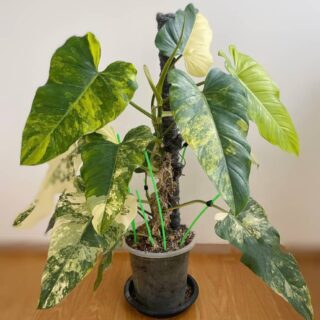 Philodendron Domesticum Variegated 11 Leaves for sale
$550.00
Philodendron Domesticum Variegated 11 Leaves for sale
$550.00
-
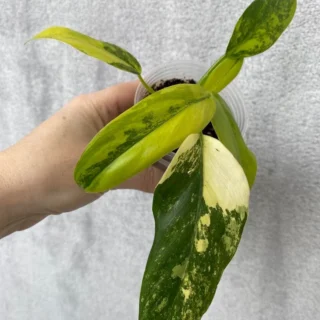 Philodendron domesticum variegated
$255.00
Philodendron domesticum variegated
$255.00
-
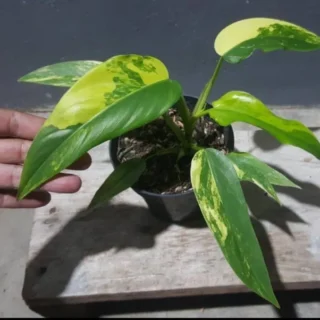 Rare Philodendron Domesticum Variegated Plant
$332.00
Rare Philodendron Domesticum Variegated Plant
$332.00
-
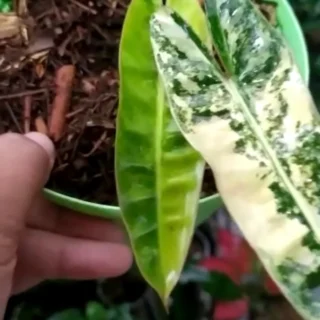 Philodendron Billietiae Variegated
$350.00
Philodendron Billietiae Variegated
$350.00
-
 1 Pot Philodendron Domesticum Variegated Free Shipping + Phyto Home Garden Outdoor Plants Yard, Garden
$290.00
1 Pot Philodendron Domesticum Variegated Free Shipping + Phyto Home Garden Outdoor Plants Yard, Garden
$290.00
Tag Cloud
Rhaphidophora Tetrasperma variegated tricolor
$375.00
Rhaphidophora Tetrasperma variegated tricolor
This is a green sport variegated Rhaphidophora tetrasperma rooted cutting with active growth and variegated leaves
Rhaphidophora Tetrasperma variegated tricolor
This is a green sport variegated Rhaphidophora tetrasperma rooted cutting with active growth and variegated leaves. Many leaves are half-moon with lime green and dark green, but some leaves have three shades of green as pictured.
Gorgeous Variegated Rhaphidophora tetrasperma plant for sale!
Culture: Cephalotus (Cephalotaceae) Variegated Rhaphidophora tetrasperma plant for sale! Very unique and rare cephalotus pitcher plant, perfect addition to any collection! Can be shipped worldwide!
The basics about this plant
The Variegated Rhaphidophora tetrasperma is a beautiful, easy-to-care-for houseplant that originates from Southeast Asia. It’s also known as the mini monstera because it looks similar to the monstera plant.
This plant is perfect for anyone who wants to add a touch of tropical beauty to their home. The leaves are variegated with shades of green, yellow, and white, and the plant can grow up to 3 feet tall.
If you’re looking to buy a Variegated Rhaphidophora tetrasperma, you can expect to pay around $400 for a small plant and up to $1000 for a large one. Rhaphidophora Tetrasperma Aurea Variegated – approximately 4-6 inches in height
Rhaphidophora Tetrasperma Paragon Albo Variegated – approximately 4-6 inches in height
Variegated Rhaphidophora tetrasperma price – $ 400+ for small plants, $ 1000+ for larger ones. Variegated Rhaphidophora tetrasperma care instructions: Keep at 65-80 degrees Fahrenheit; water only when soil feels dry;
use a good potting mix like sand or coco peat moss mixed with perlite or vermiculite; don’t let the rhizome dry out completely, but don’t keep them constantly wet either; make sure they get at least 5 hours of light per day if possible (they’ll get by on less); mist every day if possible.
How to care for your variegated R. tetrasperma
1. Place your R. tetrasperma in a spot with bright, indirect light.
2. Allow the top inch of soil to dry out before watering again.
3. fertilize your plant every other month with a half-strength solution of all-purpose fertilizer.
4. You can propagate your R. tetrasperma by stem cuttings taken from new growth in spring or summer.
5. Be sure to provide plenty of humidity for your plant by grouping it with other plants or using a pebble tray or humidifier.
6. Keep an eye out for mealybugs, spider mites, and scale, which can all infest R. tetrasperma plants.
7. If you are planning on planting variegated R. tetrasperma outside, wait until after the last frost date for your area has passed.
8. A variegated Rhaphidophora Tetrasperma plant makes a great gift idea for any garden lover in your life!
9. To grow a variegated rhaphidophora Tetrasperma outdoors, choose well drained soil that is rich in organic matter such as compost or well rotted manure to keep roots healthy and prevent root rot problems .
Plant your rhaphidophora Tetrasperma in full sun for best results. Choose a location where the plants will be sheltered from wind to prevent broken stems and toppling over due to strong gusts. Protect delicate foliage from hungry caterpillars and snails by placing collars around stems or create barriers made of wire mesh.
Your variegated Rhaphidophora Tetrasperma will need at least one foot between each plant if planted close together so they have room to grow without getting tangled up with one another and so they have enough sunlight to thrive.
The origin of this variegated Rhaphidophora tetrasperma
The variegated Rhaphidophora tetrasperma is a beautiful climbing plant that is native to tropical regions of Asia. It is also known as the golden pothos or devil’s ivy. The leaves of this plant are variegated with yellow, green, and white colors.
This plant can grow up to 20 feet in length and has aerial roots that help it attach to surfaces. The variegated Rhaphidophora tetrasperma is an easy plant to care for and is perfect for those who are looking for a beautiful, low-maintenance plant.
These plants thrive on neglect, making them great plants for people who do not have time to take care of them. They like bright light but do not need direct sunlight.
They require water only when their soil feels dry and they don’t like high humidity levels. Plant experts recommend repotting every two years when the plant starts getting crowded in its pot. Be sure to use a loose, well-draining potting mix because this plant does not tolerate wet soil. It likes consistent temperatures between 60°F and 75°F (16°C – 24°C).
How to propagate your variegated Rhaphidophora tetrasperma
To propagate your variegated Rhaphidophora tetrasperma, you’ll need to take a stem cutting from a healthy plant. Make sure the cutting has at least two leaves, and that the leaves are healthy and free of pests. Cut the stem at a 45-degree angle just below a leaf node.
Dip the cut end of the stem in rooting hormone, then place it in a pot filled with moistened perlite or vermiculite. Keep the pot in a warm, humid place out of direct sunlight, and water regularly to keep the perlite or vermiculite moist but not soggy. In four to six weeks, you should see new growth emerging from the cuttings.
Once the new plants are established, they can be potted up and cared for like any other indoor houseplant. One great thing about this species is its hardiness: it’s nearly indestructible! Variegated Rhaphidophora Tetrasperma tricolor is very easy to grow and maintain indoors.
The Paragon Albo variety of this species has been widely used as an ornamental plant due to its fantastic foliage coloration. It’s also a popular landscape plant because it thrives in hot climates while still doing well indoors when grown in pots.
How to create a stunning bonsai with a rhapis from cuttings
Look no further than your nearest garden center or nursery! The Variegated Rhaphidophora tetrasperma, also known as the Golden Pothos, is a beautiful and easy-to-care-for houseplant. It’s perfect for anyone who wants to add a touch of nature to their home without having to worry about too much maintenance.
This fast-growing climber can reach up to 20 feet in length, making it a great choice for anyone looking to add some greenery to their space. And if you’re worried about the price, don’t be! These plants are very affordable and easy to find. So what are you waiting for? Go out and get yourself a Variegated Rhaphidophora tetrasperma today! You won’t regret it!
Where can you buy this amazing green and white indoor plant?
You can buy this gorgeous palm at your local nursery or online. The Variegated Rhaphidophora tetrasperma is a beautiful, low-maintenance plant that will thrive in any indoor environment. This variety of the Rhaphidophora tetrasperma is especially striking, with its variegated leaves in shades of green and white.
The Variegated Rhaphidophora tetrasperma is a fast-growing plant, so it will quickly fill any empty space in your home. If you’re looking for a stunning, easy-to-care-for indoor plant, the Variegated Rhaphidophora tetrasperma is the perfect choice! These plants are available from nurseries or online.
They come in three different varieties: Green, Green/White and White. All three types are unique and beautiful but there’s something about the variegated (green/white) type that makes them even more special!
These plants are known to be exceptionally low maintenance, quick growing and high yielding – they grow very well indoors as well as outdoors.
Best soil for Variegated Rhaphidophora tetrasperma
The best soil for Variegated Rhaphidophora tetrasperma is a well-draining mix that is high in organic matter. You can use a commercial potting mix or make your own by mixing equal parts peat moss, perlite, and vermiculite. Be sure to add extra perlite or vermiculite if the mix seems too dense.
The plants prefer bright, indirect light but can tolerate some direct sun. If the leaves start to yellow, that means the plant is getting too much sun and you should move it to a shadier spot.
Water when the top inch of soil feels dry to the touch and be sure to empty any water that collects in the saucer beneath the pot. If you’re looking to buy a Variegated Rhaphidophora tetrasperma, also known as the Paragon Albo, then you’ll need to know what kind of soil it needs.
This plant is native to Southeast Asia and requires warm temperatures and high humidity to thrive. The best soil for this plant is a well-draining, humus-rich mix that’s high in organic matter.
You can either make your own mix or purchase a premixed potting soil from a garden center. Be sure to water regularly and mist the leaves often to maintain humidity levels. With proper care, your Variegated Rhaphidophora tetrasperma will thrive and provide you with beautiful foliage for years to come!
Best climate for Variegated Rhaphidophora tetrasperma
If you’re looking for a beautiful and unique houseplant, look no further than the Variegated Rhaphidophora tetrasperma! This gorgeous plant is native to tropical areas of Asia and is perfect for adding a touch of the tropics to your home.
The Variegated Rhaphidophora tetrasperma is a climbing plant with variegated leaves that come in a variety of colors including green, yellow, white, and pink. The plant can grow up to 20 feet tall and is easy to care for, making it a great choice for both beginners and experienced gardeners alike. It prefers bright light but doesn’t require direct sunlight.
The Variegated Rhaphidophora Tetrasperma Paragon Albo is also known as Mother-in-Law’s Tongue, due to its sharp edges which are said to resemble a mother-in-law’s tongue (ouch!). Its evergreen leaves are also believed to have medicinal properties that can cure headaches and help relieve tension.
Different Varieties and types of Variegated Rhaphidophora tetrasperma
There are many different types of Variegated Rhaphidophora tetrasperma plants available for sale. Some of the most popular varieties include the Rhaphidophora Tetrasperma variegated tricolor and the Variegated Rhaphidophora tetrasperma for sale.
Each type of plant has its own unique features and benefits. For example, the white tipped rhaphidophora tetrasperma is one of the more rare types that you can find.
It grows well in an indoor setting as well as an outdoor setting, making it a good option for those who live in a climate where there is a lot of variation between seasons.
The green tipped rhaphidophora tetrasperma also makes a great choice because it thrives in all climates, making it perfect if you want to enjoy your plant year round or if you plan on travelling to warmer climates during winter months.
The white flowered rhaphidophora tetrasperma is another good choice because it flowers heavily, which means that you will have more frequent opportunities to enjoy your beautiful flowers each year.
Guide to keeping Variegated Rhaphidophora tetrasperma
Variegated Rhaphidophora tetrasperma is a beautiful, easy-to-care-for houseplant. It does best in bright, indirect light but can tolerate lower light levels. Allow the soil to dry out between watering, and fertilize monthly during the growing season. This plant is poisonous if ingested, so keep it out of reach of pets and children.
The many shades of Rhaphidophora Tetrasperma
The Variegated Rhaphidophora Tetrasperma is one of many sorts of Rhaphidophora Tetrasperma that exists in this present reality. These plants are local to tropical and subtropical districts of South America, Africa, and India.
They are enduring spices that for the most part just develop somewhere in the range of 3 and 5 feet tall, however can develop as high as 8 feet in ideal circumstances. These plants produce cylindrical formed blossoms that come in shades of yellow, green, white, orange, pink, and red with dashes of white on every petal.
A prologue to Rhaphidophora Tetrasperma
There are north of 500 types of greeneries in Central and South America, for certain tropical assortments arriving at 5 meters (16 feet) tall. This makes it one of simply two genera to have at any point developed that enormous, alongside Nephrolepis exaltata, an uncommon cousin to Rhaphidophora tetrasperma that fills in Northern Australia.
In contrast to R. tetrasperma, in any case, N. exaltata is jeopardized thanks to unnecessary logging and clearing for farmland by people. Fortunately for us people (and in contrast to its imperiled Australian cousin), R. tetrasperma is generally developed across Asia and different regions of the planet as an elaborate plant and open air example.
As a matter of fact, in the event that you take a gander at any park or nursery in Japan, Taiwan or Korea you’ll probably track down a lovely stand of R. tetrasperma variegated tricolor. The plant’s thick trunk and green leaves make it ideal for use as windbreaks around ranches and homes, while its foundations assist with balancing out soil against disintegration during storms.
In addition, they’re likewise eatable! Be that as it may, don’t go uncovering your own plants at this time — these scrumptious rhizomes should be cooked first prior to eating them! Some even case that consuming these rhizomes can lessen cholesterol levels and work on liver capacity. All things considered, there’s no logical proof support up these cases.
So on the off chance that you truly do choose to eat your R. tetrasperma, if it’s not too much trouble, recall: control is critical!
As well as being flavorful and supportive in balancing out soil, there are a few different motivations behind why you ought to consider adding Rhaphidophora tetrasperma variegated tricolor to your home or office.
For instance: It has been shown that having pruned plants inside can essentially increment laborer efficiency . Looking at the situation objectively coherently, it appears to be legit; all things considered, concentrates on show that laborers invest close to a portion of their energy inside , so why not enrich those spaces with something pretty?
About red-leaf plants
I’m composing a couple of posts on about variegated plants. This is a basic post. Since there are such countless various sorts and variegation types, I can not cover them across the board post, so don’t get baffled on the off chance that I don’t specify your plant in the present post.
I will begin with the tetraspermas on the grounds that they are a portion of my #1 plants. They develop well outside here in Hawaii and will endure dry shade as well as wet shade.
Variegated tetraspermas are extremely open minded! Another normal names for these plants incorporate apparition plant, white butterfly tree, and red scalawag. I have three various types of tetraspermas, two of which are presented previously. The main picture shows two plants that are both called tetrasperma paragon albo.
One has a white edge on its leaves while different has more cream shaded edges. The subsequent picture shows two plants that are both called tetrasperma tricolor yet appear to be totally unique from one another and from any others I have seen on the web or at neighborhood nurseries.
The leaves on one plant (the upper left) have cream hued stripes while those on another (the base right) have green stripes with rich edges (see underneath). Both were bought locally at nurseries here in Honolulu, Hawaii; nor was developed from seed or spread by cuttings.
The third picture shows two plants that are both called tetrasperma aureum. One has yellow-green leaves with gold edges (upper right) while another has light-green leaves with yellow-green edges (base left). Once more, both were bought locally at nurseries here in Honolulu, Hawaii; nor was developed from seed or proliferated by cuttings.
As may be obvious, even inside one animal groups there can be extraordinary assortment in hue and leaf shape. As well as being pretty, these plants additionally smell decent when you brush against their leaves.
Their fragrance helps me to remember lemongrass or citronella. The species name tetrasperma implies four seeds and alludes to the number of seeds that each natural product contains.
About white-leaf plants
While most plants have one essential tone, white-leaf plants arrive in a wide range of tints. There are two unique classifications: those with leaves that are strong white and those with variegated leaves, meaning they have more than one tone.
Variegated assortments can be found at nurseries, yet to effortlessly make your own variegated plant, there’s a method for getting it done. Just take a cutting from a current variegated plant and develop it in water inside until roots structure (for the most part around 4 a month and a half).
Then plant your new variegated plant outside where it will develop typically from that point forward. ______________________________________________________ What is a rhaphidophora? In science, rhaphidophorae or Rhaphidophoridae are little arthropods that cursorily look like ticks.
They are viewed as by certain entomologists to be exceptionally inferred individuals from Acari; different researchers accept they ought to be named phytoseiids all things considered.
[1] The normal name insect bugs is at times utilized for types of rhaphidophorids, however individuals from a few different gatherings likewise go by that name.
What makes them one of a kind? Rather than genuine insects, which have eight legs, these organic entities have just six legs. Their bodies are separated into three sections: cephalothorax (head), midsection and opisthosoma (mid-region).
Most species have four sets of eyes organized in a trademark design comprising of a foremost middle pair flanked by horizontal matches put horizontally on one or the other side of the head.
Dissimilar to bugs, which inhale through book lungs loaded up with haemolymph siphoned through an arrangement of tracheae, rhaphidophorids breathe through their body surface because of their absence of book lungs.
The fingernail skin covering their body is slim and firmly extended over their delicate interior tissues which contain a lot of liquid permitting them to change shape promptly when required.
About green plants
The name Rhaphidophora tetrasperma in a real sense implies four-seed leaf, mirroring its four-separated containers. The class gets its name from rhapis, meaning plant or line. In Greek folklore, Arachne was a human weaver who tested Athena, goddess of shrewdness and specialties, to a winding around challenge.
Subsequent to losing, Arachne hung herself — yet Athena resurrected her changed as a bug with eight legs rather than two. Aphrodite gave her an additional a sets so she could wind around more rapidly. The variegated structure is called Aurea for its gold leaves and Paragon Albo for its unadulterated white edge.
Variegated plants have been around since no less than 1820 when they were portrayed by Philip Miller in his book Gardener’s Dictionary. This makes them one of our most established developed garden plants! Variegation happens when a change causes different cell types to be delivered in various pieces of the plant body.
These phone types are hereditarily indistinguishable yet contrast in work. For instance, a few cells might create chlorophyll while others produce different shades that give tone to blossoms and organic product. At the point when these cells are presented to light diversely in view of contrasts in their area on the plant body, it brings about variegation.
Leaves can be green on top and yellow on base (variegated), or strong green (non-variegated). Different models incorporate petals that are striped red on top and yellow under (variegated) or strong red (non-variegated).
Numerous green assortments of plants that you see today began as normally happening freaks, for example, Daturas, which were first depicted by Alexander von Humboldt after he experienced a freak assortment filling wild in Venezuela in 1799.
Today, there are huge number of variegated cultivars accessible to grounds-keepers and gardeners around the world. Be that as it may, not all variegated plants are made equivalent. Varieties in how much shade is available in every cell type brings about angles of variety that reach from unpretentious pastels to strong stripes.
That’s the reason why the payback period is often a year and a half.
Certain individuals lean toward a more regular look where just divides of leaves show variegation; others need bolder impacts like those tracked down on poinsettias or African violets.
To accomplish these impacts, raisers frequently utilize hereditary designing procedures like tissue culture choice and mutagenesis where synthetic compounds or radiation cause irregular transformations during development processes.
About yellow plants
The yellow plants have a place with a huge class or family called dicotyledons, which in a real sense signifies ‘two seed leaves’. Plants in which all leaves have two cotyledons are known as monocots.
Most monocots, notwithstanding, aren’t yellow; for example grasses and palms, two plant bunches with a tremendous variety in animal types. The way that rhaphidophora tetrasperma is both a dicotyledon and radiant yellow (as well as one of just three non-green sorts) makes it rather exceptional.
Truth be told, it’s yellow, yet arrives in an assortment of varieties! This is on the grounds that R. tetrasperma can replicate physically through fertilization by bugs and birds. To draw in these creatures, they need a viewable signal of some kind or another – like tone – so they can be spotted from a far distance.
If that wasn’t already enough for people who appreciate cultivating, these plants make brilliant houseplants! They’re moderately simple to really focus on and develop rapidly whenever given legitimate daylight and water.
They additionally flourish inside all year with next to no unique consideration required from their proprietors – something which most different houseplants can’t guarantee! Notwithstanding its name, variegated tricolor isn’t really a tri-hued bloom. All things considered, it alludes to how each
The many colors of Rhaphidophora Tetrasperma
The Variegated Rhaphidophora Tetrasperma is one of many types of Rhaphidophora Tetrasperma that exists in the world today. These plants are native to tropical and subtropical regions of South America, Africa, and India. They are perennial herbs that generally only grow between 3 and 5 feet tall, but can grow as high as 8 feet in ideal conditions. These plants produce tubular shaped flowers that come in shades of yellow, green, white, orange, pink, and red with streaks of white on each petal.
An introduction to Rhaphidophora Tetrasperma
There are over 500 species of ferns in Central and South America, with some tropical varieties reaching 5 meters (16 feet) tall. This makes it one of only two genera to have ever grown that large, along with Nephrolepis exaltata, a rare cousin to Rhaphidophora tetrasperma that grows in Northern Australia.
Unlike R. tetrasperma, however, N. exaltata is endangered thanks to excessive logging and clearing for farmland by humans. Luckily for us humans (and unlike its endangered Australian cousin), R. tetrasperma is widely cultivated across Asia and other parts of the world as an ornamental plant and outdoor specimen.
In fact, if you look closely at any park or garden in Japan, Taiwan or Korea you’ll likely find a beautiful stand of R. tetrasperma variegated tricolor. The plant’s thick trunk and green leaves make it ideal for use as windbreaks around farms and homes, while its roots help stabilize soil against erosion during storms.
On top of all that, they’re also edible! But don’t go digging up your own plants just yet—these tasty rhizomes must be cooked first before eating them! Some even claim that consuming these rhizomes can reduce cholesterol levels and improve liver function. That said, there’s no scientific evidence backing up these claims.
So if you do decide to eat your R. tetrasperma, please remember: moderation is key!
In addition to being delicious and helpful in stabilizing soil, there are several other reasons why you should consider adding Rhaphidophora tetrasperma variegated tricolor to your home or office.
For example: It has been shown that having potted plants indoors can significantly increase worker productivity . If you think about it logically, it makes sense; after all, studies show that workers spend almost half their time indoors , so why not decorate those spaces with something pretty?
All about red-leaf plants
I am writing a few posts on all about variegated plants. This is an introductory post. Because there are so many different types and variegation types, I will not be able to cover them all in one post, so do not get frustrated if I do not mention your plant in today’s post.
I will start with the tetraspermas because they are some of my favorite plants. They grow well outdoors here in Hawaii and will tolerate dry shade as well as wet shade.
Variegated tetraspermas are very tolerant! Some other common names for these plants include ghost plant, white butterfly tree, and red rascal. I have three different kinds of tetraspermas, two of which are pictured above. The first picture shows two plants that are both called tetrasperma paragon albo.
One has a white edge on its leaves while the other has more cream colored edges. The second picture shows two plants that are both called tetrasperma tricolor but look completely different from each other and from any others I have seen online or at local nurseries.
The leaves on one plant (the top left) have cream colored stripes while those on another (the bottom right) have green stripes with creamy edges (see below). Both were purchased locally at nurseries here in Honolulu, Hawaii; neither was grown from seed or propagated by cuttings.
The third picture shows two plants that are both called tetrasperma aureum. One has yellow-green leaves with gold edges (top right) while another has light-green leaves with yellow-green edges (bottom left). Again, both were purchased locally at nurseries here in Honolulu, Hawaii; neither was grown from seed or propagated by cuttings.
As you can see, even within one species there can be great variety in coloration and leaf shape. In addition to being pretty, these plants also smell nice when you brush against their leaves. Their scent reminds me of lemongrass or citronella. The species name tetrasperma means four seeds and refers to how many seeds each fruit contains.
About white-leaf plants
While most plants have one primary color, white-leaf plants come in a variety of different hues. There are two different categories: those with leaves that are all solid white and those with variegated leaves, meaning they have more than one color.
Variegated varieties can be found at nurseries, but if you want to make your own variegated plant, there’s a way to do it easily. Simply take a cutting from an existing variegated plant and grow it in water indoors until roots form (usually around 4–6 weeks). Then plant your new variegated plant outdoors where it will grow normally from then on out. ______________________________________________________ What is a rhaphidophora? In biology, rhaphidophorae or Rhaphidophoridae are small arthropods that superficially resemble ticks. They are considered by some entomologists to be highly derived members of Acari; other scientists believe they should be classified as phytoseiids instead.
[1] The common name spider mites is sometimes used for species of rhaphidophorids, though members of several other groups also go by that name.
What makes them unique? As opposed to true spiders, which possess eight legs, these organisms possess only six legs. Their bodies are divided into three parts: cephalothorax (head), abdomen and opisthosoma (abdomen).
Most species have four pairs of eyes arranged in a characteristic pattern consisting of an anterior median pair flanked by lateral pairs placed laterally on either side of the head.
Unlike spiders, which breathe through book lungs filled with haemolymph pumped through a system of tracheae, rhaphidophorids respire through their body surface due to their lack of book lungs. The cuticle covering their body is thin and tightly stretched over their soft internal tissues which contain large amounts of fluid allowing them to change shape readily when needed.
About green plants
The name Rhaphidophora tetrasperma literally means four-seed leaf, reflecting its four-parted capsules. The genus gets its name from rhapis, meaning vine or cord. In Greek mythology, Arachne was a mortal weaver who challenged Athena, goddess of wisdom and crafts, to a weaving contest.
After losing, Arachne hung herself—but Athena brought her back to life transformed as a spider with eight legs instead of two. Aphrodite gave her an extra pair so she could weave more quickly. The variegated form is called Aurea for its gold leaves and Paragon Albo for its pure white margin.
Variegated plants have been around since at least 1820 when they were described by Philip Miller in his book Gardener’s Dictionary. This makes them one of our oldest cultivated garden plants! Variegation occurs when a mutation causes different cell types to be produced in different parts of the plant body.
These cell types are genetically identical but differ in function. For example, some cells may produce chlorophyll while others produce other pigments that give color to flowers and fruit. When these cells are exposed to light differently because of differences in their location on the plant body, it results in variegation.
Leaves can be green on top and yellow on bottom (variegated), or solid green (non-variegated). Other examples include petals that are striped red on top and yellow underneath (variegated) or solid red (non-variegated).
Many horticultural varieties of plants that you see today started out as naturally occurring mutants such as Daturas, which were first described by Alexander von Humboldt after he encountered a mutant variety growing wild in Venezuela in 1799.
Today, there are thousands of variegated cultivars available to gardeners and landscapers worldwide. However, not all variegated plants are created equal. Variations in how much pigment is present in each cell type gives rise to gradients of color that range from subtle pastels to bold stripes.
Some people prefer a more natural look where only portions of leaves show variegation; others want bolder effects like those found on poinsettias or African violets. To achieve these effects, breeders often use genetic engineering techniques like tissue culture selection and mutagenesis where chemicals or radiation cause random mutations during growth processes.
About yellow plants
The yellow plants belong to a large class or family called dicotyledons, which literally means ‘two seed leaves’. Plants in which all leaves have two cotyledons are known as monocots.
Most monocots, however, aren’t yellow; for instance grasses and palms, two plant groups with a vast diversity in species. The fact that rhaphidophora tetrasperma is both a dicotyledon and bright yellow (as well as one of only three non-green types) makes it rather unique.
In fact, it’s not just yellow, but comes in a variety of colors! This is because R. tetrasperma can reproduce sexually through pollination by insects and birds. In order to attract these animals, they need some sort of visual cue – such as color – so they can be spotted from afar.
As an added bonus for humans who enjoy gardening, these plants make excellent houseplants! They’re relatively easy to care for and grow quickly if given proper sunlight and water.
They also thrive indoors year round without any special care needed from their owners – something which most other houseplants cannot claim! Despite its name, variegated tricolor isn’t actually a tri-colored flower. Instead, it refers to how each individual leaf is speckled with three different shades of green on top and white along its veins on bottom.
Because each leaf has several layers within itself containing different hues of green, they appear more variegated than simply being solid green would allow.
Its white underside adds another layer of depth and beauty: if you look closely at them under strong light you’ll notice that even tiny areas near where new leaves emerge are still pure white instead of being mixed in with shades of green like everything else nearby!
Rhaphidophora Tetrasperma Albo Variegated Paragon is considered to be a hybrid between Rhaphidophora tetrasperma Aurea Variegated and Rhaphidophora tetrasperma Variegated Tricolor.
It features deep green tops with splashes of yellow throughout, creating an almost tie-dye effect when viewed up close. Like most hybrids, there isn’t much information available about R. tetraspema albo varigata paragon yet; however we do know that its parentage contains genes for both sexual reproduction and self-pollination/cloning!
Mixing multiple plant species in your aquarium
When you’re first starting out, a good rule of thumb is to limit yourself to just one or two kinds of fish. However, as you become more comfortable with your tank and its inhabitants, feel free to mix multiple species together. While they do all have fins and scales, plants and fish aren’t on equal footing in an aquarium setting.
That’s the reason why the payback period is often a year and a half.
The proper balance between plants and animals in an aquarium is an area where many hobbyists fall short when they begin their journey. Understanding how much light each needs will give you better results for both plants and animals.
Just remember that even if there are a lot of them, unless they are fish like Neon Tetras that love to group together, it’s best not to mix too many different types in one tank. This is especially true if you plan to keep any kind of cichlids (like angelfish) since they can be quite territorial.
Also be aware that some fish shouldn’t be kept together at all because they may fight or eat each other. For example, Goldfish should never be kept with tropical fish because Goldfish can carry disease that could harm other tropical fish in your tank. Lastly, keep in mind that some species may grow larger than others so make sure you have enough room for them!
You don’t want a small Betta getting stuck behind an enormous plant! Another way to add color to your tank is by adding live rock. Live rock comes from coral reefs and has been shown to help maintain stable water conditions while also providing shelter for smaller fish, which makes it easier for them to find food.
And while live rock doesn’t necessarily need light like plants do, it does benefit from having a strong source nearby. Without direct sunlight coming into contact with live rock, algae can start growing on top of it which isn’t very attractive and can reduce its effectiveness as a habitat for smaller fish. That’s the reason why the payback period is often a year and a half.
If you’re worried about algae growth but still want some type of cover in your aquarium try using artificial rocks instead of live ones; these are made from plastic rather than natural material but still provide shelter without becoming covered in algae over time.
Related products
-
Monstera Albo Borsigiana
Read moreBuy Monstera Albo borsigiana OnlineMonstera Albo borsigiana or Monstera borsigiana Albo variegata is a variegated form of Monstera borsigiana. Many people love its lovely green leaves with nearly white variegations that may include marbling, streaks, and larger blocks, including half-moon.
-
Monstera Adansonii Mint – whole plant.
$299.00Add to cartMonstera Adansonii Mint- whole plant. Phyto included!
Rare true unicorn Monstera Adansonii ‘Mint’ variegata – European form , with consistent leaf shape and stable variegation. Not to be mixed up with the Indo or Indonesian Marble that has elongated leaves and irregular variegation.
-
Monstera Albo Variegata 6 leaves
$350.00Add to cartMonstera Albo Variegata 6 leaves
Monstera deliciosa ‘Albo Variegata’ is an impressive, spreading, easy-to-grow, evergreen and generally low maintenance perennial plant
-
Monstera Mint Variegated
$320.00Add to cartBuy Monstera Mint Variegated Online
That said, the Monstera Mint goes by many different names so I’ll just list them down so you know that they all mean the same plant.
- Mint Monstera
- Monstera Mint Variegated
- variegated monstera mint
- Monstera Deliciosa Mint
- Monstera Mint Variegata
- Monstera Variegata Mint
Latest
Best Selling
-
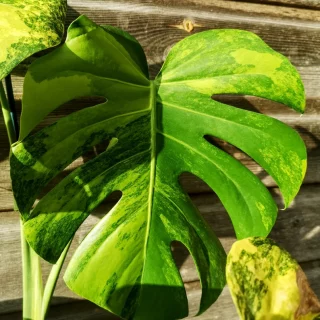 Sport Monstera XXL - Monstera Aurea - Variegated Monstera Deliciosa Large Form Sport Aurea. Monreo.
$396.00
Sport Monstera XXL - Monstera Aurea - Variegated Monstera Deliciosa Large Form Sport Aurea. Monreo.
$396.00
-
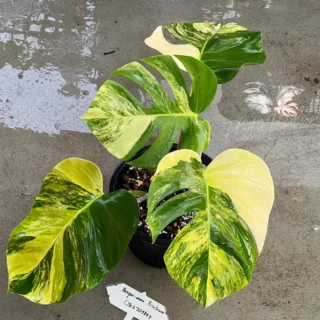 Rare monstera borsigiana aurea variegated
$350.00
Rare monstera borsigiana aurea variegated
$350.00
-
 Monstera AUREA Borsigiana Variegated Live Plant Fully Rooted
$390.00
Monstera AUREA Borsigiana Variegated Live Plant Fully Rooted
$390.00
-
 Rare Monstera Mint Deliciosa Borsigiana Variegata Live Plant Fully Rooted 4 Leaves
$380.00
Rare Monstera Mint Deliciosa Borsigiana Variegata Live Plant Fully Rooted 4 Leaves
$380.00
Best offers
Join Risk Free
30 days refund
100% Safe
Secure Shopping
24x7 Support
Online 24 hours
Best Offers
Grab Now
Free Shiping
On all order over
About Us

Established in 2013 by Logan, Variegated Plants Shop continues to be family owned and operated florist. Variegated Plants Shop a proud family tradition where we excel at customer service, creativity & artistry in the floral market.
Know More...

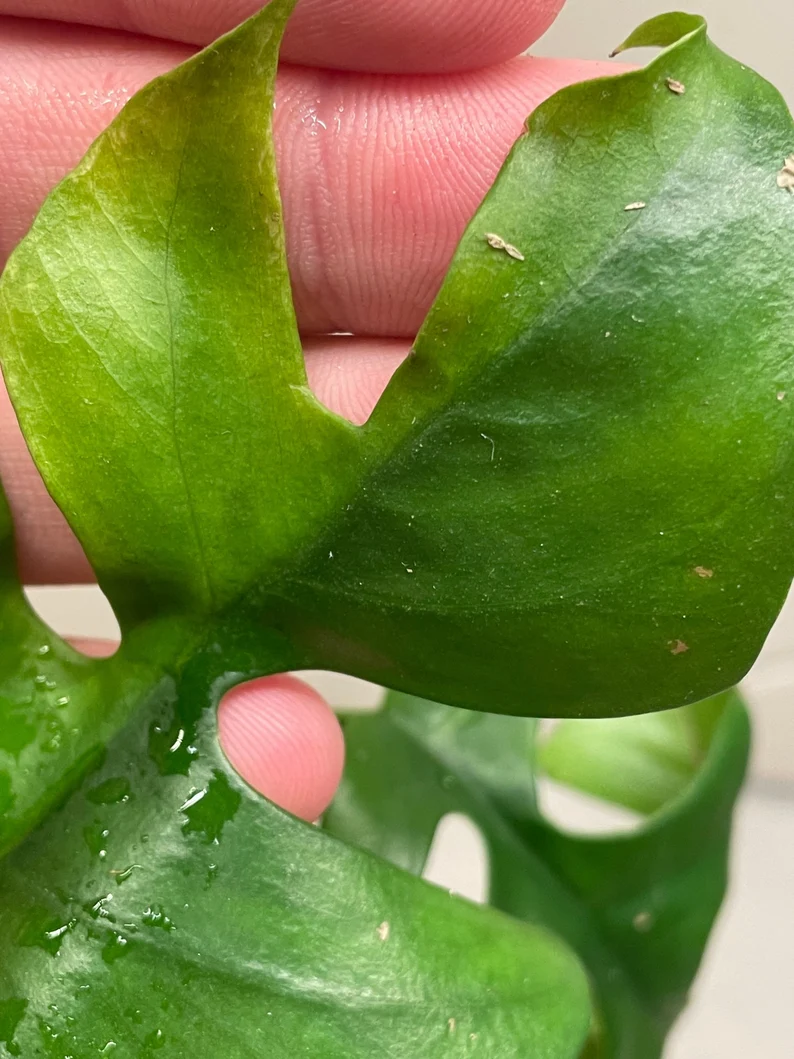
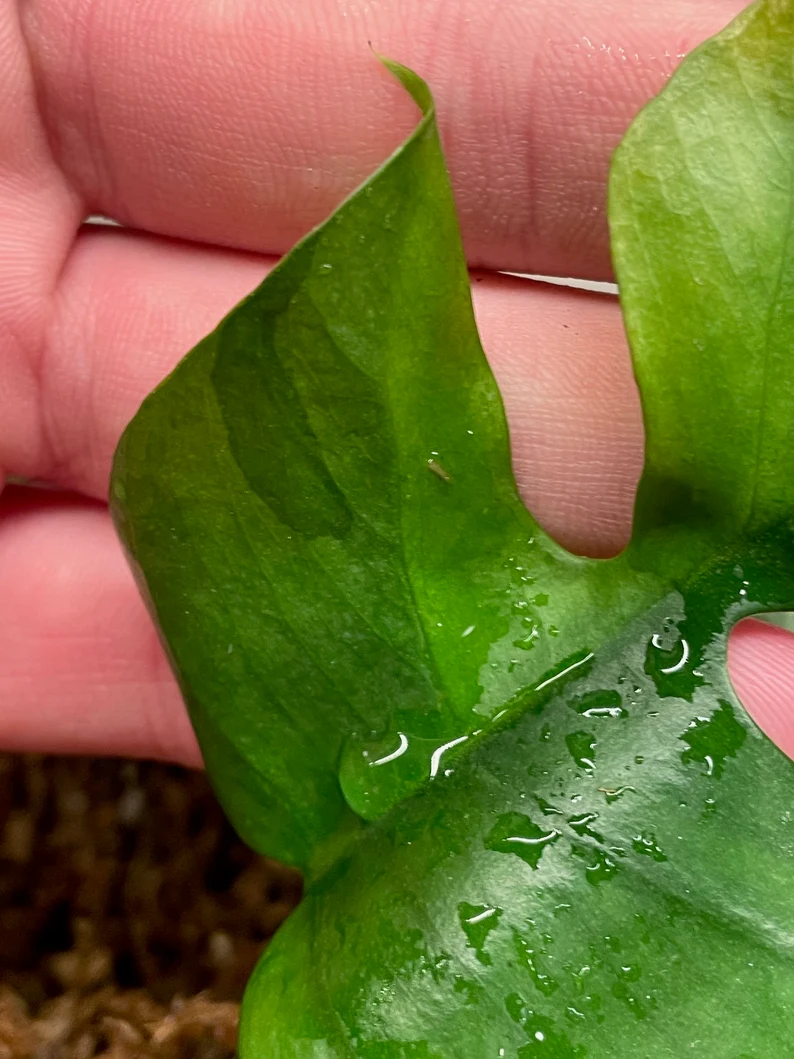
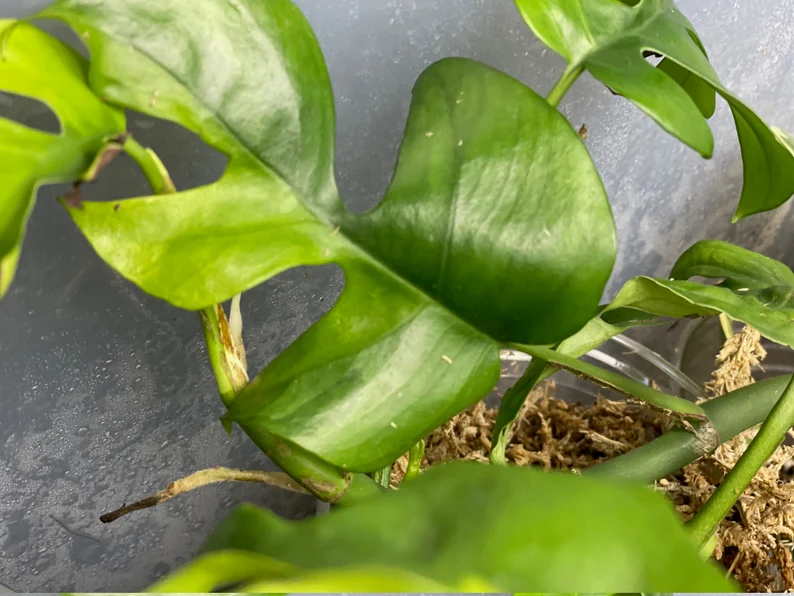
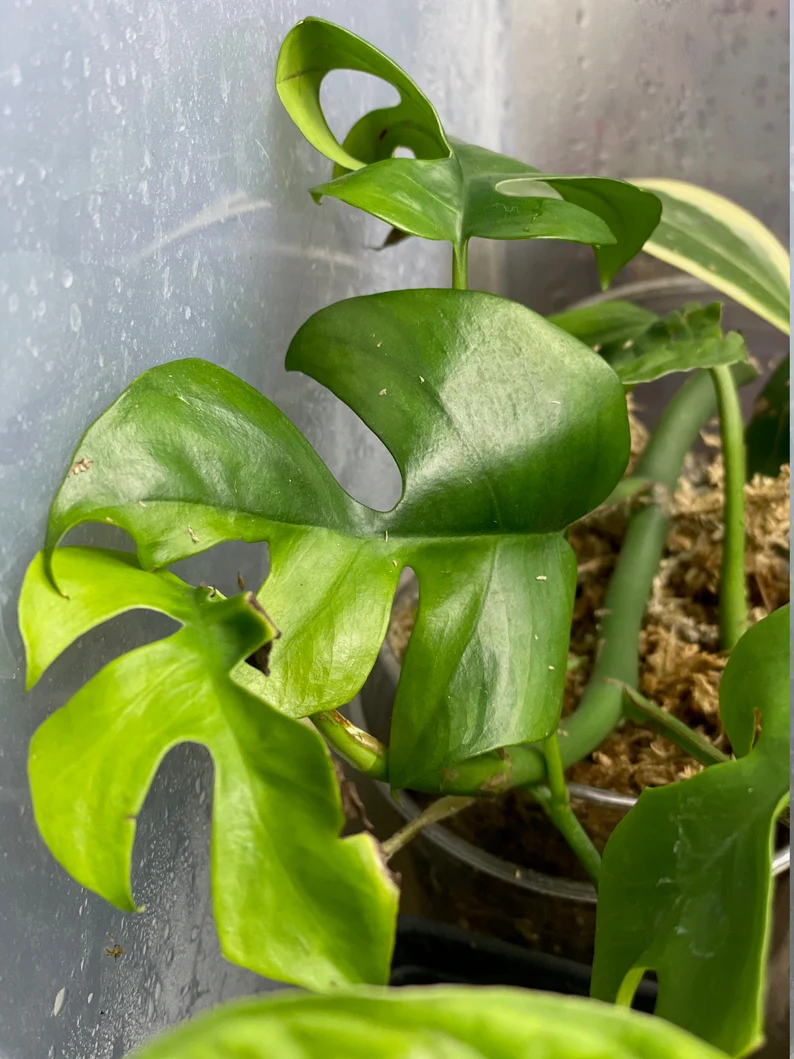
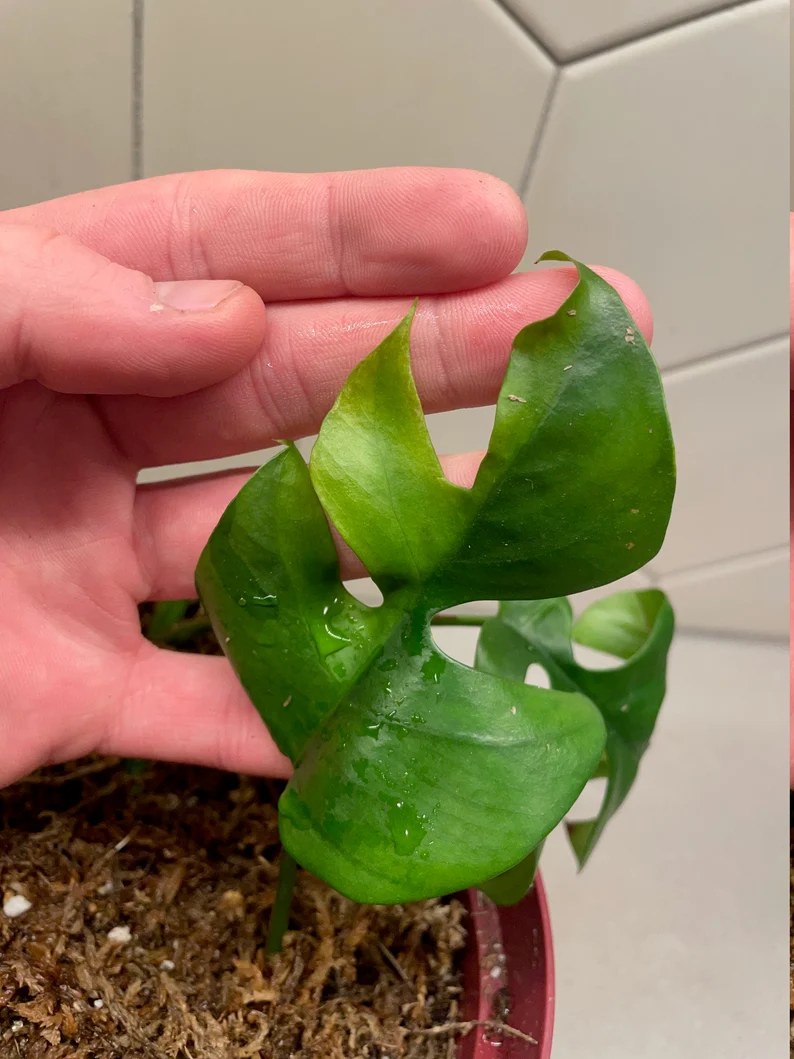

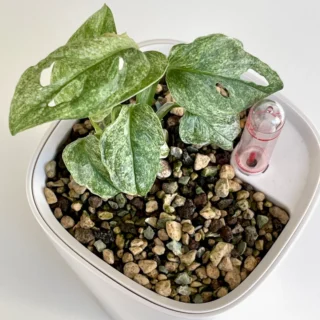
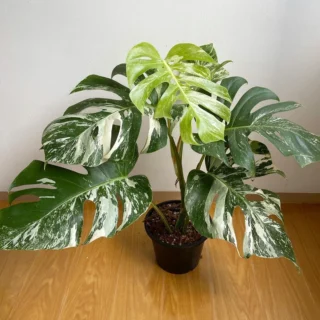

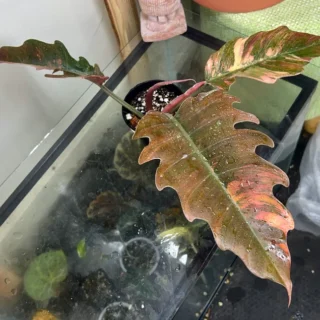

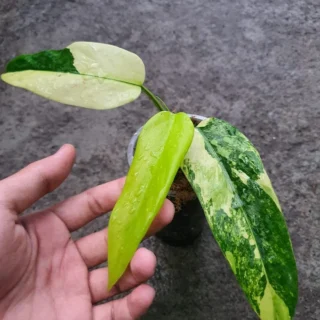
Reviews
There are no reviews yet.